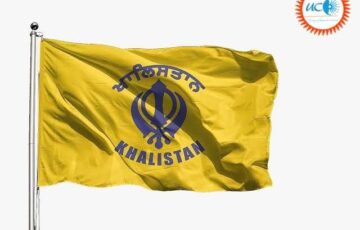Q. The adoption of ‘Act Far East’ Policy underlines the significance of the far East region for India. Discuss. Also, highlight the impediments to India’s interests in the Far East.
Approach:
- Introduce with the development of Russia’s Far East.
- Elaborate on the significance of the Far East for India.
- Elaborate on various impediments in realizing India’s interest in the Far East.
- Conclude with a way forward.
Answer:
India launched the ‘Act Far East’ policy in 2019 to boost India’s engagement with Russia’s Far East (RFE) region. India had announced a $1 billion line of credit for the development of the resource-rich far East region.
The Far East is the easternmost part of Russia and it borders two oceans, the Pacific and the Arctic, and 5 countries (China, Japan, Mongolia, the United States, and North Korea).
Significance of the Far East for India
Geostrategic advantage for the Indo-Pacific region
- The geographical location of the far East with access to rail routes and access to large Pacific ports, energy transit routes, and a huge reservoir of natural resources act as the gateway to connect to the rest of the world, especially in the Indo-Pacific region.
- India’s engagement in this region gives access to explore more opportunities in Indo- the Pacific region providing India with access to fast-growing markets in Southeast Asia and beyond.
Connectivity enhancement:
- Geographical distance has often been regarded as the biggest impediment to weak economic relations between India and Russia.
- In this direction, the Chennai-Vladivostok maritime route needs the utmost attention by both countries to benefit as it acts as an open gateway to the Indo-Pacific region.
- Through this route, India’s efforts to benefit from the region’s wealth will get a major boost when its Far East investments and policies correspond with its domestic ‘Blue Economy’ initiatives such as the SAGARMALA project.
Economically:
- The critical sectors for areas of cooperation for India include minerals and rare earth, energy, forestry and timber, healthcare, agriculture and food processing, ceramics, tourism, and infrastructure.
- The region is full of energy resources such as gas and oil. India has already invested in Russian oil fields and is looking for more investment opportunities.
Strengthen relations with Russia
- The 5th Eastern Economic Forum (EEF) held in 2019 emerged as one of the key focus areas to strengthen India-Russia economic cooperation alongside the aim to reach the $30 billion target of trade by 2030.
- India’s growing engagement with East Asia and the emergence of the Indo-Pacific Region as a link between India and the eastern rim of the Pacific offer new opportunities for the Russia-India partnership.
Impediments to India’s interest in the far East
- Competition from China: By making significant investments in the Far East, China has gained access to both land routes and water routes. It facilitates strong economic engagements with Russia and European markets as well as fuels its desire to hold an assertive posture in the Indo-Pacific region.
- Limited presence: India has had a very limited company in the region. Before the EEF of 2019, the RFE figured marginally in Indo-Russian relations.
- Other players: Far East poses a bigger challenge as India is not insulated from competition given the pro-active role of other extra-regional players.
Ex:-
- South Korea has invested in shipbuilding projects, the manufacturing of electrical equipment, gas-liquefying plants, agricultural production, and fisheries.
- Japan seeks to depend on Russian oil and gas resources after the 2011 meltdown in Fukushima. It also sees RFE as the market for its agro-technologies.
Therefore, India may explore the possibility of investing in infrastructural projects such as having a Chabahar port-like project in the far East to gain leverage in the region and derive commercial as well as strategic benefits.






